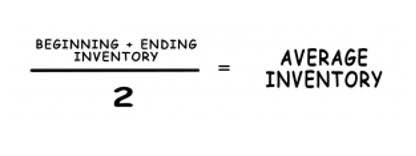Oil and Gas Accounting and Finance Masterclass

The remaining production, termed “profit oil,” is then split between the state and the contractor according to a pre-agreed formula. This split can vary significantly depending on the terms negotiated and the level of production achieved. Revenue recognition in the oil and gas industry is a nuanced process that oil and gas accounting hinges on the specific terms of contracts and the nature of the transactions involved. The industry often deals with long-term contracts, which can complicate the timing and measurement of revenue. One of the primary frameworks guiding revenue recognition is the IFRS 15 standard, which outlines a five-step model to determine when and how much revenue should be recognized.
- Regulatory requirements and market conditions can significantly impact revenue recognition practices in the oil and gas sector.
- For instance, in a wellhead sale, revenue is typically recognized when the oil or gas is extracted and sold directly at the site.
- These complexities necessitate robust internal controls and regular audits to ensure compliance and accuracy.
- Engaging consulting firms with expertise in oil and gas accounting can offer valuable insights and support for financial management initiatives.
- Adopting a robust framework based on the International Accounting Standards Board (IASB), Financial Accounting Standards Board (FASB), or Generally Accepted Accounting Principles (GAAP) can help.
E&P Oil and Gas: Key Accounting and Financial Considerations

Rex Draughn CPA specializes in working with with energy companies to reduce tax liabilities, improve profits, and find ways to grow. We’ve developed individualized accounting services to address the industry specific challenges, compliance needs and industry standard tax practices of the oil and gas industry. We offer a variety of tax and assurance services to upstream, midstream, and downstream organizations including oil and gas exploration, drilling, production, development, pipeline, and service companies. The process of calculating DD&A involves several steps, starting with the estimation of the total recoverable reserves for depletion purposes. This estimation is crucial as it directly impacts the rate at which costs are allocated over the productive life of the asset.
- We can also help you create business value, raise equity and debt capital, or evaluate strategic alternatives.
- Estimating ARR involves variables such as inflation rates, discount rates, and potential technological advancements.
- Risk management extends to financial reporting practices, where transparency and accuracy are paramount.
- The main difference between the two accounting method is that only cost in proven wells are capitalized in the successful effort method while every cost is capitalized under the full cost method.
- These firms provide specialized expertise to address industry-specific challenges and optimize financial processes.
- Regular audits help identify areas for improvement and ensure adherence to industry standards.
Revenue Recognition
This framework helps companies manage these activities while adhering to industry-specific regulations and standards. The volatile nature of oil prices and the significant capital investments required for exploration and production make this framework particularly essential. Course DescriptionOil and gas operations have some of the most unique accounting issues found in any industry.

What are the Differences Between Successful Efforts and Full Cost Accounting?

Specialized Production Entity (SPE) accounting ensures companies maintain transparency and compliance with regulatory standards, addressing the unique financial challenges faced by companies in Legal E-Billing this sector. Companies record exploration costs capitalized under either method on the balance sheet as part of their long-term assets. This is because, like the machinery used by a manufacturing company, oil and natural gas reserves are considered productive assets for an oil and gas company. Generally accepted accounting principles (GAAP) require that companies charge costs to acquire those assets against revenues as they use the assets. Adherence to financial reporting standards is paramount in the oil and gas industry, given the sector’s complexity and the significant financial stakes involved. These standards provide a framework for consistent and transparent financial reporting, which is crucial for investor confidence and regulatory compliance.

Our Services
- From finding oil and gas reserves to distributing them for consumer use, accounting is a big part of all areas of the industry.
- Regulatory frameworks, such as those from the Financial Accounting Standards Board (FASB), provide guidelines for these practices.
- Accountants — always quick to seize opportunities — are taking advantage of specialized oil and gas accounting courses offered by some MBA programs to gain entry and influence in this industry.
- Extensive disclosures around reserves and costs are also required to be made as per the guidance.
- This is because, like the machinery used by a manufacturing company, oil and natural gas reserves are considered productive assets for an oil and gas company.
- Accountants analyze operating expenses, capital expenditures, and production costs to identify opportunities for cost optimization and improved efficiency.
Accounting in the oil and gas industry is a specialized field that requires a deep understanding of both financial principles and sector-specific income summary practices. The complexity arises from the unique nature of exploration, extraction, and production activities, which involve significant capital investment and long-term project timelines. These principles, among others, provide the foundation for financial reporting under U.S. GAAP is dynamic, and the FASB continually updates and issues new standards to address emerging issues and improve the quality of financial reporting. All oil and gas companies are expected to stay current with the latest accounting standards to ensure compliance with U.S. Assets in the oil and gas industry are subject to depletion and impairment due to the finite nature of reserves.
6 Statement of Hypothesis
- In the realm of Oil and Gas Accounting, case studies are invaluable for understanding the complexities involved in specialized financial reporting for extraction industries.
- Companies must adhere to stringent reporting standards such as IFRS or GAAP, which mandate detailed disclosures about financial risks and uncertainties.
- In addition to these factors, companies must also consider the impact of joint ventures and partnerships on revenue recognition.
- Cost depletion is based on actual production, while percentage depletion offers a fixed deduction based on gross revenue, subject to a 15% cap for most properties.
- The Modified Accelerated Cost Recovery System (MACRS) under U.S. tax laws enables accelerated write-offs, enhancing cash flow in the early years of an asset’s life.
The two most prevalent methods are the equity method and the proportionate consolidation method. Under the equity method, an investor recognizes its share of the joint venture’s net income or loss in its financial statements, reflecting its investment in the venture. This method is typically used when the investor has significant influence but not control over the joint venture. On the other hand, the proportionate consolidation method involves recognizing the investor’s share of the joint venture’s assets, liabilities, revenues, and expenses directly in its financial statements. Explore essential oil and gas accounting practices, from cost types to revenue recognition and financial reporting standards. Effective management of taxation and compliance in oil and gas accounting requires a robust understanding of the industry-specific financial principles, as well as the ability to adapt to evolving regulatory landscapes.

